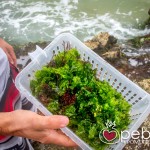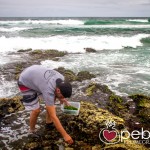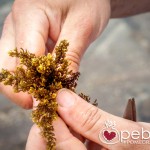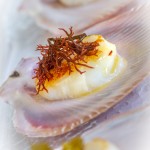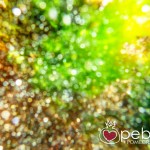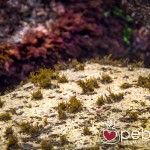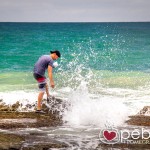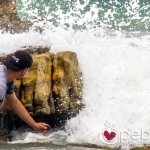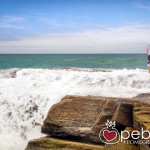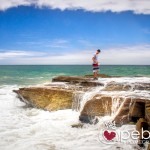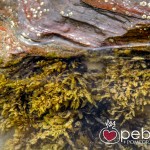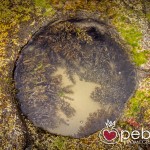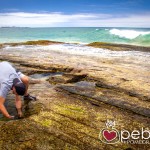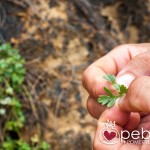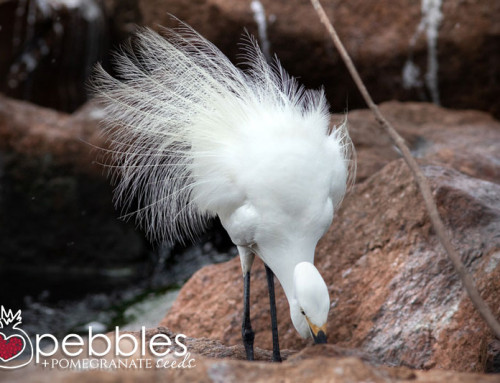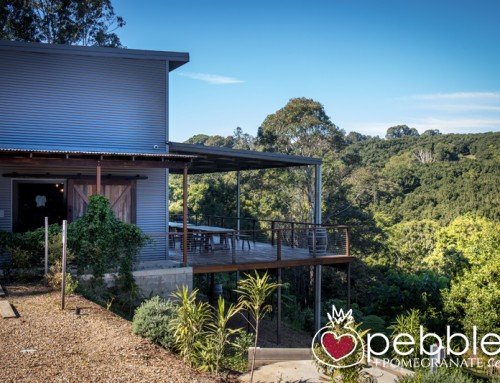I have been quite fascinated by the whole concept of foraging. It has always been on my radar, and over the years I have met a number of chefs / cooks / producers and people who just love doing it, who have broadened their own food horizons to include a number of wild foods.
However, recently I met Nick Blake, of Wild Forage Australia, and he opened my eyes to a whole spectrum of wild foods that I had previously never really taken note of.
Foraging is not a new thing. I guess, it is just being rediscovered by chefs and foodies, though it does pose the risk of becoming a bit of a lost art. Having said that, there are a few chefs that have never lost the art – it is probably just me that has not been paying enough attention!
I look back to my own upbringing; my mum was especially good at identifying all sorts of wild mushrooms and herbs. My childhood was filled with pine mushrooms, slippery jacks and chanterelles, foraging for wild blackberries, crab apples and rosehips. I remember her pointing out various herbs, plants and weeds as well, some for eating, others for dying fabric and wool – I kind of wish I had paid more attention now.
I guess this is what I mean by lost arts. Foraging used to be a way of life. Instinctively we knew what was edible and what was not, whereas now, we are so used to cultivated crops, that we have lost sight of the wild foods and how to identify them. I carelessly picked a poisonous mushroom once, amongst a bunch of field mushrooms – took it home and made a cheese and mushroom toasted jaffle. Tasted great, but I ensued on evil 24 hour ‘journey’ that I would never want to repeat in my lifetime. So identification is a pretty important part of the foraging process. However, Nick is identifier extraordinaire! He knows his wild foods!
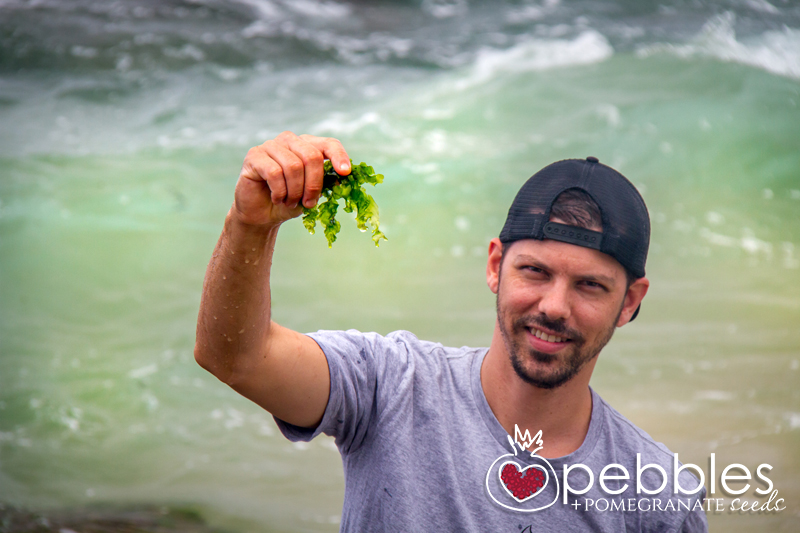
I was meeting up with Nick at the beach. He was foraging for seaweed for a growing number of restaurants he supplies on the Sunshine Coast, Brisbane and beyond. I spotted him from the carpark, standing on the rocks. He was eating some seaweed that he had just pulled out of the water – it had to be him!
It was low tide and the rocks and tidal rock pools were beginning to expose clusters of seaweed. Nick has a few ‘special’ places on the coast where he forages – and I am not going to tell you where they are. But now I know what to look for, I realised that you don’t really need to look that hard.
“It is a truism in this world that you can live around something your whole life without any inkling that it exists, and then, once it’s been pointed out to you, you can’t stop seeing it.”
From Hunter, Angler, Gardener, Cook – http://honest-food.net/seaweed-salad-recipe/
I read this on a fabulous foraging blog after I returned home from meeting with Nick and I first start ‘seeing’. It really resonated with me.

Standing there on the edge of the rocks while Nick was foraging, I looked down and suddenly realised I was standing on food, and lots of it! Little clusters of vivid green, yellow and rich earthly browns, the seaweed was everywhere. I had just never considered before that it was edible.
I tried a few morsels. It is not like I haven’t eaten seaweed before. In fact I eat it all the time – kombu in my miso soup, nori in my sushi, seaweed salad with my sashimi, my seaweed sprinkles… I had just never made the connection before, probably because I am not dealing with the raw unrefined product… daft, I know…
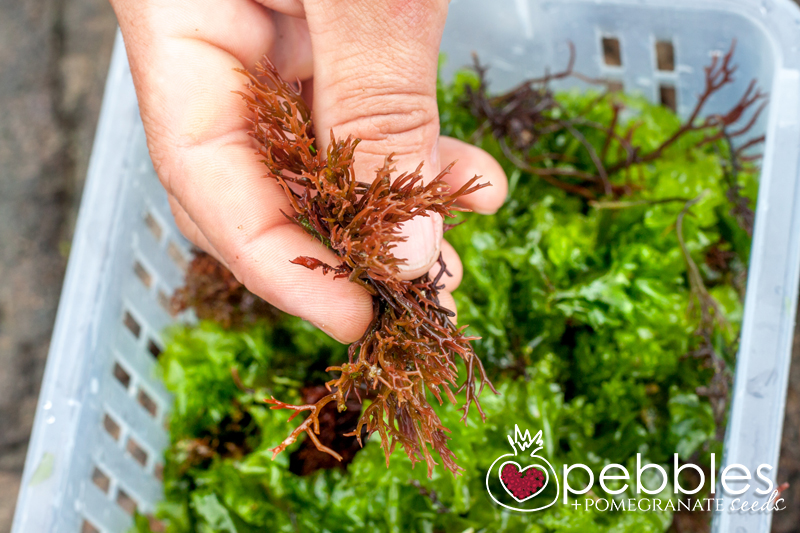
On a recent visit to Tasmania I was captivated by the enormous elk-like horns of kelp jutting from the rocks in the tidal pools. I remember questioning if it was edible – I knew it was, but what to do with it? How do you prepare something like that? I wish I had met Nick before, he gave me an incredible idea for how to prepare it, not at all what I would have thought to have done. It is all in the knowledge and this is where Nick really comes to the fore, he has some pretty impressive food progeny.
Nick’s background is an interesting one. Originally from New Zealand, he spent what sounds like a pretty magical childhood in Fiji from the age of four, where he was exposed to foraging at a very young age. Although it probably wasn’t called ‘foraging’ like it was some specialist new concept – it was just day-to-day life and how everyone would contribute to a communal feast. I suggest you read Nick’s story in his own words on his website…
http://wildforageaustralia.com.au/about/
I have to admit, I thought I had a pretty magical childhood growing up on a farm, but I was almost envious of Nick’s experience and how it has formed his thoughts about food and what he brings to the table in terms of his own food ethos, in which sustainability and environmental awareness play a very large part.
He went on to study Environmental Science, got a degree, and then as you do, gave it all away to become a chef. While the career choice was a total about-face, it is interesting to see how he has brought the environmental science aspect back into his food, so I guess he hasn’t really given it away at all – he has made it make a great thing even better.

Working alongside incredible chefs, such as Zeb Gilbert from Wasabi, AND (and I am so jealous) René Redzepi, from the illustrious Noma (gush) when it did its pop-up stint in Sydney, he has had the opportunity and insight to utilise ingredients in a whole new way.
I could listen to Nick for hours. He can tell you about every variety of seaweed, how and where it grows – even its sex life. Well, ok, that’s a bit of stretch, but he did point out the very impressive reproductive organs of one lot of seaweed 😉
Watching Nick scamper over the rocks you can see he is quite comfortable in his surrounds. I would be concerned I would be washed out to sea…

At low tide the freshest of the seaweed is exposed. Nick is very selective about where he picks the seaweed from, ensuring that there is lots of fresh running water from the tide and that the seaweed has not been exposed to the elements so it is at its freshest. Most of the best seaweed is still submerged so there is no staying dry. It was a hot day, so this looked awesome, but I can’t imagine it would be too much fun in the middle of winter. But then I think I recall him saying that the seaweed is more of a summer ‘crop’.
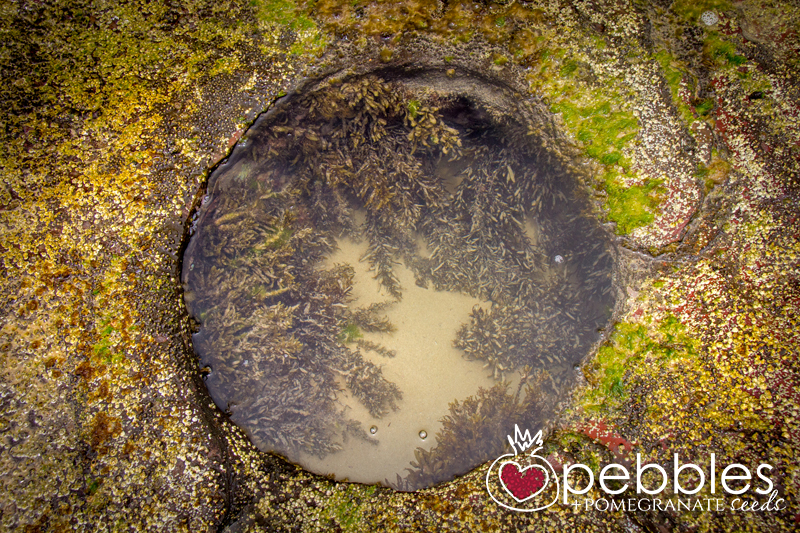
Nick cuts the seaweed with a pair of scissors – he does not just rip it off roots and all. This is important from a sustainability aspect – he takes only what he needs – to order – and doesn’t always go to the same place. It allows the seaweeds to regenerate and he is not depleting these precious resources. It is worth pointing out that Nick also has all of the required permits – you cannot just forage anywhere, and especially not in environmentally protected areas. So if you are thinking of doing it – do your research – fines can apply. And just to be clear – never eat the seaweed that is washed up on the shore, and make sure you stay out of stormwater or effluent channels – that is not foraging, that is garbage collecting – it needs to be cut from the source and living from pristine waters that are tidal and being renewed constantly, not stagnant. Again, do your research.
Nick doesn’t just forage for seaweeds. He forages for a whole realm of coastal, rural and urban wild foods; succulents, Warrigul greens, oxalis, seaspray, milk thistle, lichens, moss, banksia flowers, dandelions – you name it – if it is wild and it’s edible and in season, and chefs are happy to be creative with it, he will source it.
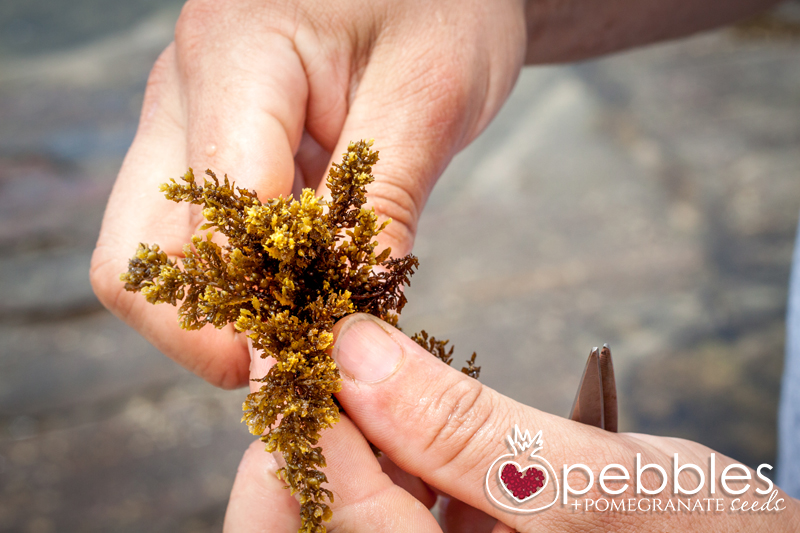
While much of the wild foods are used in more sparsely, decorative ways by chefs, Nick would like to see them be used more as staples and he would like to see more people being aware of the wild food that is around them and how to prepare and use it.
Nick points out some sea parsley on the rocks – he spots it from a mile off. Yep, it tastes like parsley. Nick knows his stuff.
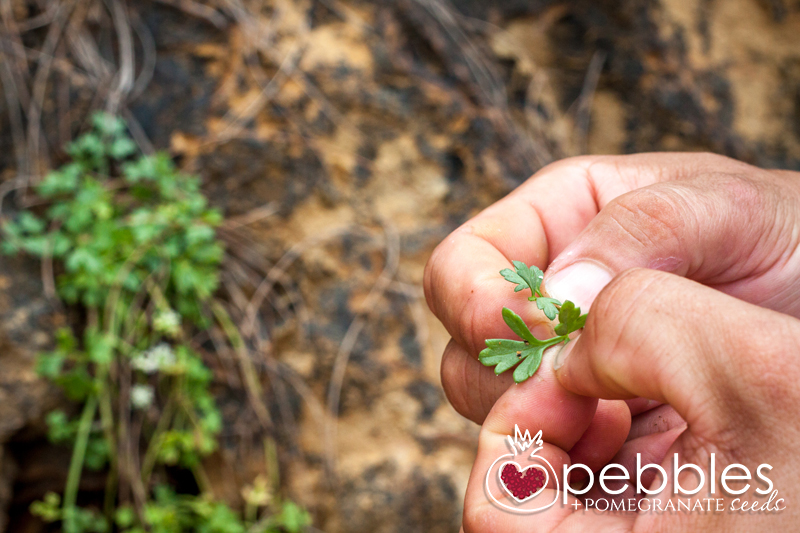
I guess it comes back to the ‘seeing’ bit.
A couple of days after Nick showed around his foraging patch, I went back a to see if I could now see it too. Instead of walking around blindly trampling on everything, I took more care and looked at every plant and piece of greenery, which emerged from beyond the tide. Curiously, I felt tempted to stick everything in my mouth, but stopped myself (mushroom memory) and decided, that I need to do a little more background research, even if it was just for my own peace of mind. So I went home and ordered a bunch of wild food and seaweed books online and a new obsession has begun – online bookstores are loving me at the moment.
But back to the rock pools – I did take along some scissors and snipped a few pieces – had a taste – and then popped a few samples in some seawater as Nick had done and then taken it home and had a little experiment and took some photos. I was particularly impressed by the gracilaria. I thought it tasted like crunchy oysters – which made me laugh – probably doesn’t sound very nice, and if you don’t like oysters, that would pose a problem, but I thought it was amazing! AND, you should have tasted it on the scallops I whipped up for lunch… oh, #yesplease
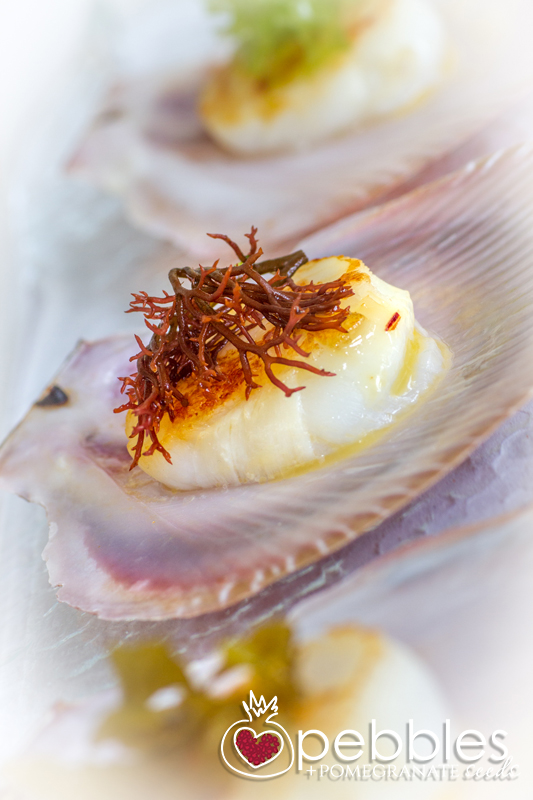
I tried to get some underwater photos as well, but the tide was not quite out yet… let’s just say that particular element of my photography session did not exactly go to plan…

It was one of the nicest mornings I have had in a long time, and I can see how Nick would gain so much pleasure by what he is doing.
It is with a little sadness that I reflect that we have come so far in our evolution of mass production, convenience and nutrient depleted food, that we have lost the skill to identify wild food, and treat it as exotic rather than commonplace. Magical childhoods like that of Nick’s are so rare these days that we need to rely on individuals with passion so that these skills and foods are not lost completely. Kudos.
Nick’s business Wild Forage Australia supplies seaweeds, and other foraged morsels to restaurants and wholesalers. For more information, see Nicks’ website.
http://wildforageaustralia.com.au
Nick has sent through some information of the wonderful seaweeds he collected on the day, and rather than paraphrase it, I thought I would included the information in its entirety and share some of the knowledge that Nick has so kindly shared with me…
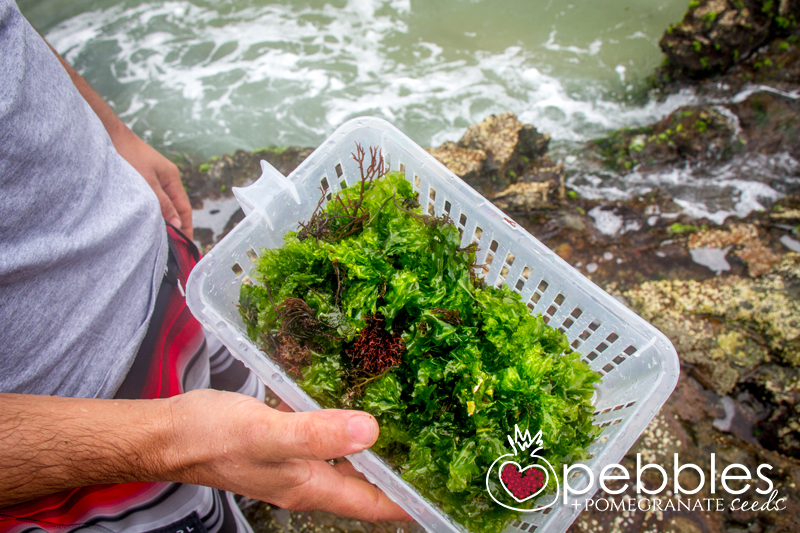
The first species we came across was sea lettuce, a common seaweed found throughout our rocky local coastline. Sea lettuce is found year round in the sublittoral zone growing abundantly on rocks and other algae. It grows prolifically in nutrient rich waters where it exhibits a dark green colour. Sea lettuce found perched high on rock faces, is subjected to the falling tide, sun and elements resulting in a bleaching effect and light green colouration not particularly desirable to chefs.
The sea lettuce – Ulva lactuca – is generally mistaken for the Australian species known as Ulva australis. The lactuca species is common worldwide often found on beaches decaying as a result of nutrient enrichment causing large scale blooms to occur.
Sea lettuce is a visually catching product. It stores well in seawater under refrigeration and is an excellent garnish. It can be used whole to distil our coastal landscape onto a plate conveying coastal themes or alternatively separated into singular sheets to accompany and bring forward an A Grade ingredient.

Gracilaria is more common than sea lettuce. There are many species of red algae and red weeds some of which look very similar. It can be hard to tell the difference between sub species like Hypnea. To the untrained eye one might collect it thinking they had Gracilaria, which is a more notable tabletop seaweed. Hypnea, on the other hand, does not eat as well and is better suited to make commercial Agar-Agar being a carrageenan. Meaning it has natural properties and when combined with heat can set a liquid or puree into a silicon type texture without breaking down at room temperature. These types of seaweeds are called ‘hydro-colloids’ and there are many forms that are now used in all our modern restaurants all derived from seaweed.
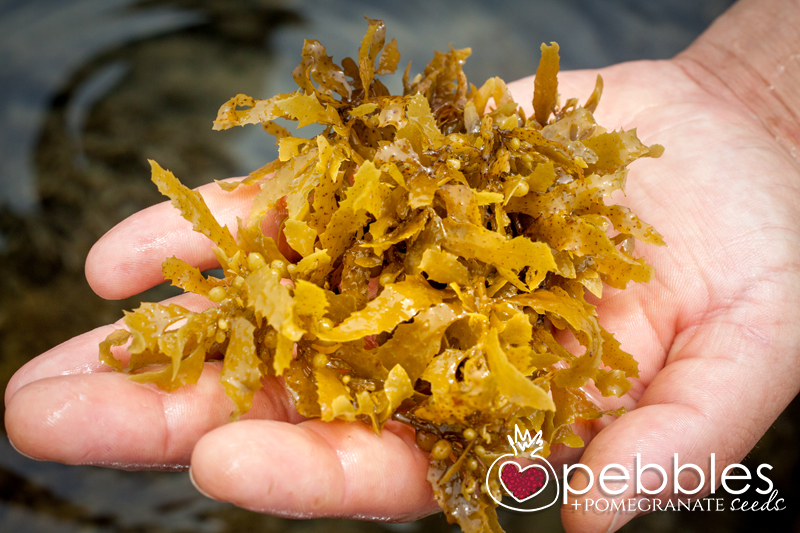
Bladderwracks are common in our tidal rock pools on rocky coastlines. There are many species of wracks found throughout the world and a few a found on our local beaches. They are easily identified by the presence of ‘air bladders’. These are tiny berry like appendages that are actually part of the seaweed’s reproductive system. Upon further investigation I found that the species I was actually revisiting was Sargassam meticum. Outside of its normal range, it can be highly invasive.
Big thanks to Nick for his time and passion.
This story was written by Petra Hughes – Pebbles + Pomegranate Seeds




